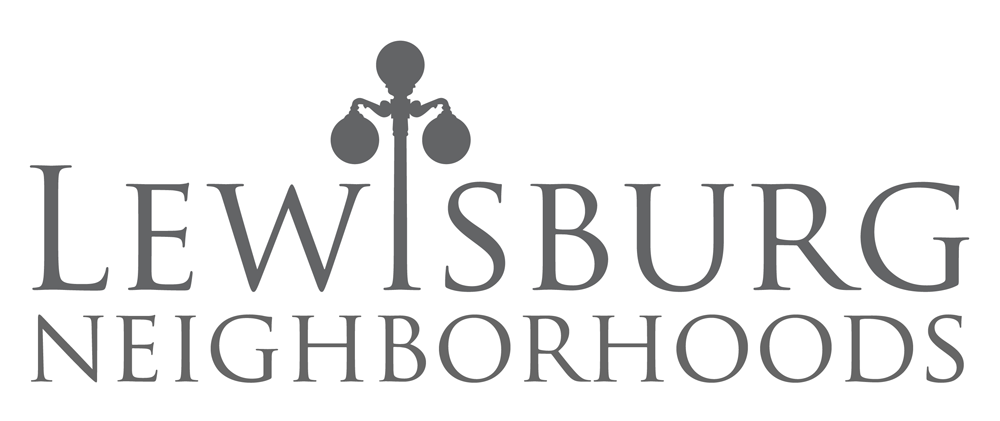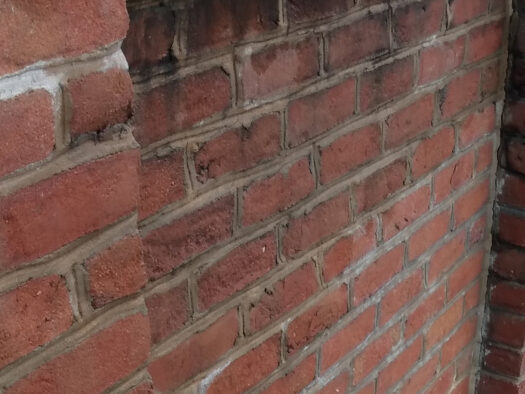It is fantastic that so much progress is being made toward a COVID-19 vaccine. It is thrilling to think that putting the insanity of this year behind us is now on the horizon. But it's important to remember that it will be a while yet until that comes to fruition, even given the promising announcements of the past week. We need to work together so that as many of us as possible make it to the vaccine roll-out in the coming months.
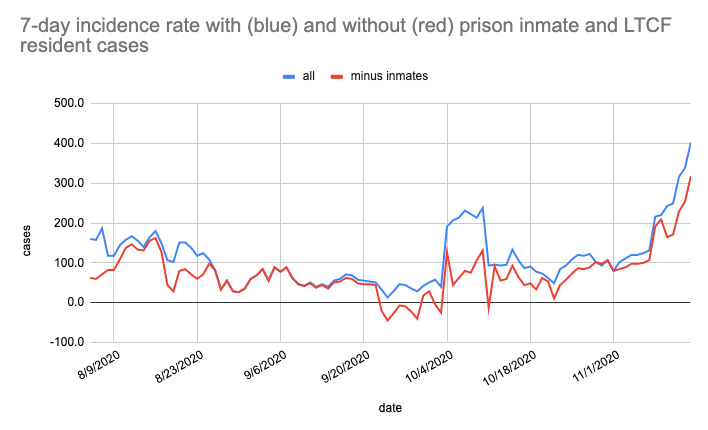
To that end and in light of the problematic level of community transmission nationally and locally (see graph above), I have a really big ask of people here in the Central Susquehanna Valley. I need you to be considerate and get creative about your Thanksgiving and Christmas celebrations this year. We need to modify our plans for the holidays in 2020 in order to ensure we will have many more years of holiday plans to be made in future. We figured out alternatives for Halloween. Let's carry that spirit into November and beyond.
I know the suggestion sounds outrageous and sad and horrifying. I am the absolute worst for bringing it up. To be perfectly honest, a month ago, I was angling, trying to figure out whether our family would still be able to pull off our favorite traditional meal with dear friends in Maryland. My husband had to be the holiday heavy and point out how unrealistic that was. He was right. And now it’s my turn to tell you. So let’s shoot for a turkey in every pod! Please please please keep households apart unless you can figure out ways to get together where you stay outdoors and masked.
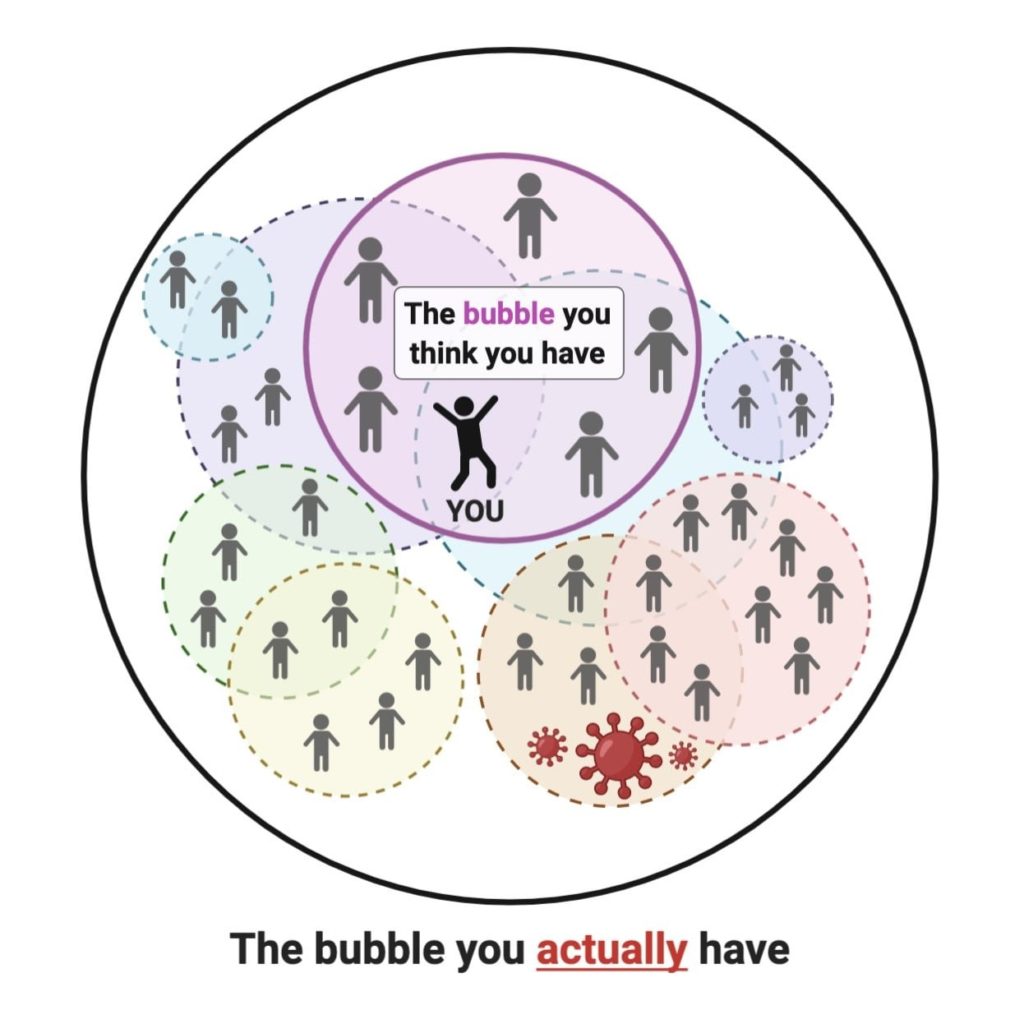
You may be asking yourself, "What is she talking about?" Perhaps you were thinking the latest CDC Thanksgiving recommendations were just for residents of Chicago or New York. Unfortunately, they're for us, too, central PA. In fact, you can put in the parameters of your planned celebration into this risk calculator and it will give you the current level of risk tailored to your location (also recall that as cases continue to increase over the next few weeks, which they will even if people suddenly start to take mitigation seriously today because of the two week lag, that that will be an underestimate of your risk for the day of the holiday, check it again as the date approaches).
Why should you listen to this? I know local thinking goes that whole rest of the year has been ruined for no good reason. There is a conviction that public health officials and the medical community have been crying wolf all year. People feel that they have been forced repeatedly to take actions to avoid things that never happened and they’re frustrated about it and unwilling to even consider it anymore. But I am asking you to consider it -- more urgently than ever before.

I’m also still struggling with how to explain a very important point that could defuse some of that frustration and anger, namely the fact that we avoided outbreaks here earlier precisely BECAUSE we took action. People are not wrong that we have not previously had a serious problem locally. What they fail to understand is that there is no reason we would have been spared earlier if we hadn’t taken action.
I don’t know if it’s just a matter of needing to do a better job of explaining it or not. But I am going to try. I’ve been looking for metaphors, analogies, or parables to counter the crying wolf reference. I’m not sure what will be most effective and I’m in the mood to throw everything at the wall and see if anything sticks. Here are a few different formulations:
- It’s not actually crying wolf in the pejorative sense if, after shouting "Wolf!" the boy kills a wolf that was threatening his flock. Even if the sheep never knew there was a wolf hunt underway to go along with the cry of “Wolf!” they did hear, when an actual wolf has been dispatched, the sheep benefit. So there were yells of COVID in the spring and we put some good COVID-repellent measures in effect, thereby holding that wolf at bay.
- Maybe it would be helpful to think of it more in the context of belling the cat – though it’s possible not enough people will understand this reference! As the tale is told, a group of mice being terrorized by a cat come up with the ideal solution to eliminating the scourge: attach a bell to the cat's collar. It’s a brilliant idea in theory; the only catch is they can’t figure out how to actually do it. In the case of COVID around here over the past 8 months, we actually seem to have succeeded in belling the cat. Only now the cat has come back… with friends… all over the country at the same time.
- Here's a more mundane image: imagine you are filling a glass and don't want it to overflow. You don’t wait until it is already overflowing to stop filling it. You recognize what you’re doing and you stop pouring. Earlier in the year, we were all ordered to right the pitcher, stick it back in the fridge, and sit on our hands. And lo and behold the glass didn’t overflow! Now consider: the fact that it didn’t overflow is not evidence that we should not have stopped pouring. It also doesn’t mean you have to be happy about what the process of preventing overflow entailed. We can discuss a range of possible options to slow the pour or more measured ways to increase the size of the glass. Unfortunately right now, given simultaneous pressures spread out over large swaths of the country, the glass is actually getting smaller not bigger. Please stop pouring!
- Fourth time’s the charm: imagine you are in a car speeding toward a brick wall in the dark. In any situation where you are speeding toward a brick wall, there is a certain point at which you must hit the brakes if you don’t want to hit the wall. And that point is definitely not once you are at the wall. The good news is, we are being warned about the wall and it’s not like the brakes are out – we know what to do; we just have to do it. The bad news is that though the people who understand the virus and public health and medical system capacity are telling us the brick wall is up ahead, there are a large number of drivers who don’t believe there’s any wall up ahead at all.
That’s it. That’s all I’ve got in terms of explaining that people were crying wolf in the spring because there was a wolf at the door then and they are crying wolf again now because there are now more wolves at the door. In such situations, crying wolf does not constitute the outrage you think it does.

And what is the situation? There are definitely people who have not been paying that much attention all along. Up until now, our remoteness, lack of population, and intermittent compliance with public health recommendations has allowed the community as a whole to manage even without being fully abreast of the key details about COVID. But the efforts of those who have been practicing wolf deterrence locally are no longer sufficient to protect the rest of the community from the growing pack.

These are the key things you need to keep in mind to avoid the wolves, herd of cats, overflowing glass, or brick wall up ahead:
- The virus stats have not really changed, but our ability to measure (especially in the form of testing) has. Some graphs make it look like we have way more cases nationally now than we did in the spring, but if you take into account the relative paucity of testing back then, you'll see that we're probably just now coming into roughly the same ballpark as the early case peak; we just didn't know how many cases there were back then. We are also still looking at a disease that is broadly contagious, with a hospitalization rate of around 15% and a mortality rate of around 1.5% (IF your healthcare system is not overwhelmed).
- Only a few percent of people in our region have been infected to date (well under 5%). That means, even at the most optimistic projection for achieving herd immunity, we’d need almost 50% more of the area population to get infected before the virus might begin to burn itself out.
- At the modest mortality rate cited above, for Union County, that would mean around 3300 people needing to be hospitalized and around 330 dying. And while the vast majority would be expected to survive, a significant percentage of those would suffer from long term health effects. To put the demand in context, we currently have about 150 hospital beds, including specialized ones, and under 15 ICU beds in the county. That hospital serves people in multiple surrounding counties, who are themselves also experiencing increases in infection rates. If you add in Geisinger, there are far more beds (over 400 regular or pediatric hospital beds and 70 ICU beds) but also far more people open to infection to compete for those beds.
- The key risk factors for COVID transmission map almost perfectly onto the typical Thanksgiving dinner: indoors, close quarters, different households, range of ages, travel, talking, eating, unmasked, long duration, poor ventilation. Don’t do it!
- People infected with COVID-19 are contagious for several days before they come down with symptoms. If you have general contacts in the community for the two weeks prior to Thanksgiving (now), which would amount to extended indoor contact with anyone outside your family, even if you’ve been wearing a mask during that time, you cannot guarantee you will not be coming down with the infection around the 26th. Furthermore, if you come down with an asymptomatic case, you will likely have no idea that you have it, but not knowing won’t prevent you from being infectious. You can transmit the disease without realizing it, whether it’s just a matter of not yet coming down with symptoms or never having any at all.
- The virus is currently spreading largely out of control in 47 states. There are 9 states in which all but one or two counties are experiencing uncontrolled spread. The fact that the death rate does not yet match the peak at the spring is not a sign that it won’t match or exceed the peak at the spring. Both hospitalizations and death counts are rising now and they are expected to lag confirmed cases by 2 weeks and 4 weeks respectively. (For more on this, see our other recent post.) That lag also plays out in our response. Even if we take drastic action now, the next two weeks of case increases are already baked in. For every day or week we wait, we further delay the point at which the curve starts to bend back downward. What's more, precisely because the cases are spread over much of the country, even as we reach reach and exceed the early hospitalization peak and health systems get more and more stressed, that stress is more diffused. It is still acute. And we don't have the opportunities to send reinforcements to key locations when everyone is at peak simultaneously.
- Depending on when it comes on line and the logistics are in place for distribution, the vaccine will be able to interrupt all of this. But given that the daily new case count locally is currently doubling every week, if we did absolutely nothing to stop it, we could get to half the local population having been infected -- with all the attendant crises -- by mid-January. We would prefer the vaccine to help us interrupt a far less precipitous increase in cases. But in order for that to happen, we have to start reducing the rate of increase now...
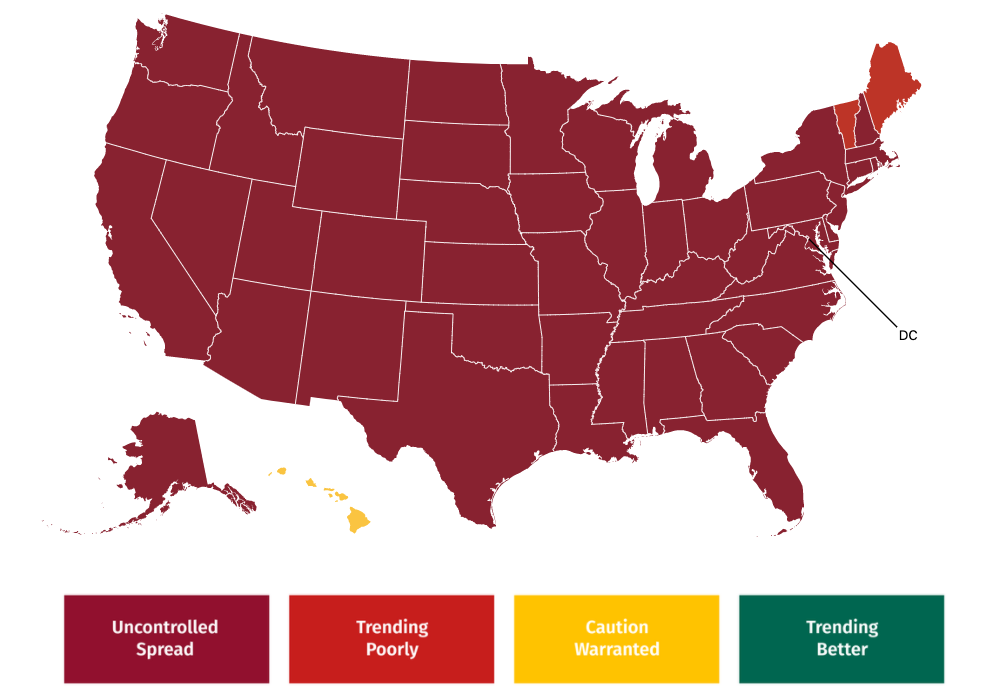
All of this is a lot to take in. This whole year has been a lot to take in. But it’s time to get serious. Let’s do what it takes to get through to the promise of the vaccine and move beyond all this once and for all.
The best news of all is that it is not hopeless! Even without a vaccine, we already have tools we can use to keep the wolves at bay: we just need to wear masks, practice distancing, up our hygiene, and isolate if we’ve had a known exposure or have any symptoms. A big Thanksgiving dinner with people outside your household (including college students just returned from campus -- unless they have fully quarantined and been tested!) is sadly not compatible with this. Delivering food to loved ones, going for a hike with friends (with masks and distancing), or setting up for zoomsgiving dinner are. Going the Calvin Trillin Turkey Day curmudgeon route of making spaghetti carbonara for just the household instead is.
What are you going to come up with to celebrate this holiday safely and honor your loved ones and the community at large?
